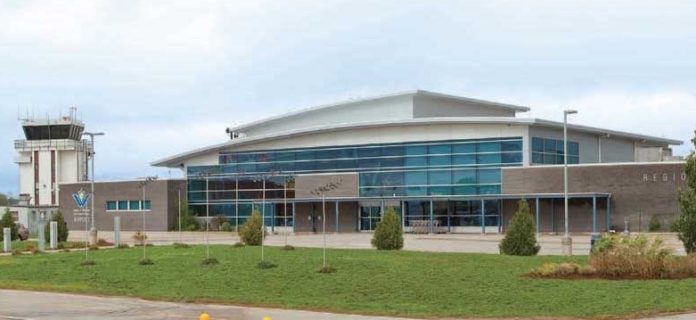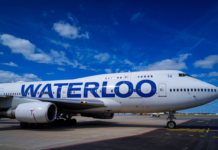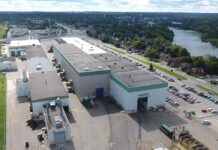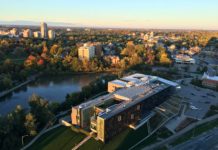Guiding the future of The Region of Waterloo International Airport
The Region of Waterloo International Airport (YKF) is one of the top 20 busiest airports in Canada. In 2015 there were more than 150,000 passengers who used the airport and over 100,000 aircraft landings or take-offs. Waterloo Region has a highly mobile population and the numbers show there is a strong demand for air travel.
 It is projected that by 2036 Waterloo Region will grow to 789,000 residents. It is also estimated that by 2043 southern Ontario will be home to 15.5 million people and regional air travel volume is expected to reach more than 90 million passengers annually. Air travel demand over the next two decades puts Toronto Pearson Airport (Pearson) at roughly 65-70 million passengers annually by the mid 2030s with no signs of slowing down. With the potential for this increased demand for air travel the time to plan for it is now.
It is projected that by 2036 Waterloo Region will grow to 789,000 residents. It is also estimated that by 2043 southern Ontario will be home to 15.5 million people and regional air travel volume is expected to reach more than 90 million passengers annually. Air travel demand over the next two decades puts Toronto Pearson Airport (Pearson) at roughly 65-70 million passengers annually by the mid 2030s with no signs of slowing down. With the potential for this increased demand for air travel the time to plan for it is now.
The Region of Waterloo is currently in the process of developing a 20 year Master Plan to guide the future of the Airport from 2016 to 2035. This plan takes a number of factors into consideration:
- The opportunities and challenges the Airport will face over the next 20 years
- How to best meet the travel and connectivity needs of our growing community
- A projected capacity shortfall at Toronto Pearson International Airport that by 2043 could leave an estimated 20 million passengers unserved annually
Air travel demand over the next two decades could see Pearson at roughly 65 million passengers – and there are no signs of slowing down. A study completed in September 2015 by the Greater Toronto Airports Authority (GTAA), Growth, Connectivity, Capacity: The future of a key regional asset, proposed a potential solution to this passenger shortfall. The report suggests Pearson investigate working with regional airports in southern Ontario to design an integrated multi-airport system, which could help move capacity from Pearson to other airports. The Region of Waterloo International Airport is one of several airports that could play a major role in helping to meet this regional aviation demand.
Preparing for this next phase of development is an important consideration in being able to respond to the passengers that could go unserved at Pearson. YKF is well positioned geographically to play a larger role in this potential new system of airports. Currently the airport only captures four per cent of the passengers in its immediate catchment area, approximately 35 kilometers around the airport. However it is estimated there could be up to two million passengers that travel from within this catchment area annually. More flights to more places would allow business and leisure passengers who currently travel to Pearson to fly from YKF.
The ever-changing nature of the aviation industry could also affect the future growth at YKF and the entry of ultra low cost air carriers into the Canadian marketplace would increase passenger traffic. With increased passengers at YKF, comes the need for airport enhancements including increasing the size of the air terminal building, adding parking spaces and improving the connecting road network.
In 2015 it was estimated that YKF contributed $90 million to the Region’s economy*. Currently over 25 businesses operate from the airport and employ more than 300 people. With the demand for increased passenger service and better global connectivity these numbers will only grow.
 The Region of Waterloo International Airport in partnership with the Greater Kitchener-Waterloo Chamber of Commerce is pleased to present a Point of View Luncheon with Guest Speaker Howard Eng, President and CEO of the (GTAA). To find out more about this event or about the potential opportunities that exist for the Region of Waterloo International airport, please visit: engageregionofwaterloo.ca.
The Region of Waterloo International Airport in partnership with the Greater Kitchener-Waterloo Chamber of Commerce is pleased to present a Point of View Luncheon with Guest Speaker Howard Eng, President and CEO of the (GTAA). To find out more about this event or about the potential opportunities that exist for the Region of Waterloo International airport, please visit: engageregionofwaterloo.ca.
The Region of Waterloo International Airport is owned and operated by the Regional Municipality of Waterloo, Ontario (Canada). *Wilfrid Laurier University 2015 Economic Impact Study.
















